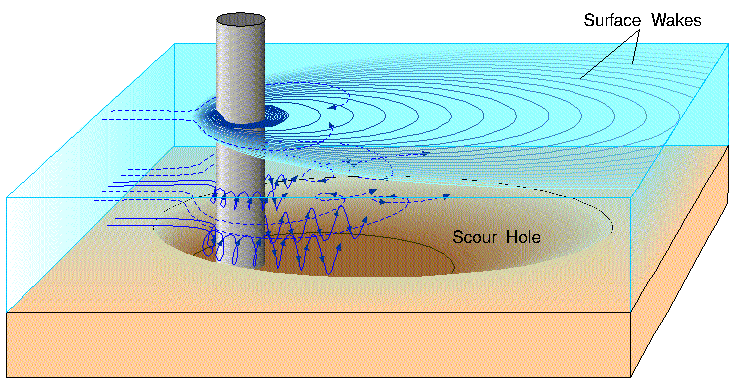
Source: Wikipedia
Scour detection is a process used by civil engineers to identify and monitor the erosion of soil around the foundation of structures such as bridges, buildings, and dams. The goal of scour detection is to detect and diagnose any erosion that may occur, so that it can be repaired or mitigated before it becomes a major safety concern.
Scour is the erosion of soil that occurs around the base of a structure due to flowing water. This can happen in rivers, streams, and other bodies of water. Scour can have a significant impact on the stability and integrity of a structure, making it critical to detect and mitigate as soon as possible.
There are several different techniques that can be used as part of scour detection, including visual inspections, sensor-based monitoring, and geotechnical instrumentation. Sensors such as inclinometers, piezometers, displacement and extensometers can be installed around the foundation of a structure to measure various parameters, such as soil displacement, water pressure and soil pore pressure. The data collected by these sensors is then analyzed to detect any changes or anomalies that may indicate the presence of scour. Modern displacement sensors can be placed above the water and distinguish the water level and riverbed to an accurate idea of the current scour level.
In addition, civil engineers can use mathematical models and numerical simulations to predict the scour process and evaluate the scour protection system.
The use of scour detection can help civil engineers to better understand the behavior of soil around a structure over time, and to identify potential issues before they become major problems. This can help to improve the safety and longevity of a structure, and can also reduce the overall costs of maintenance and repairs.
